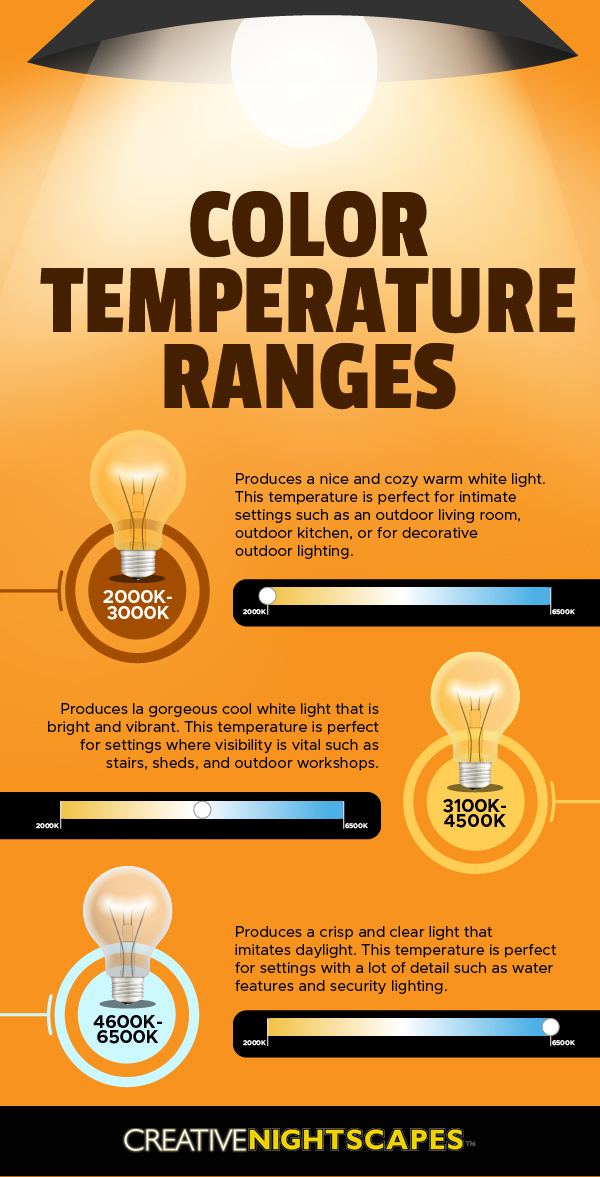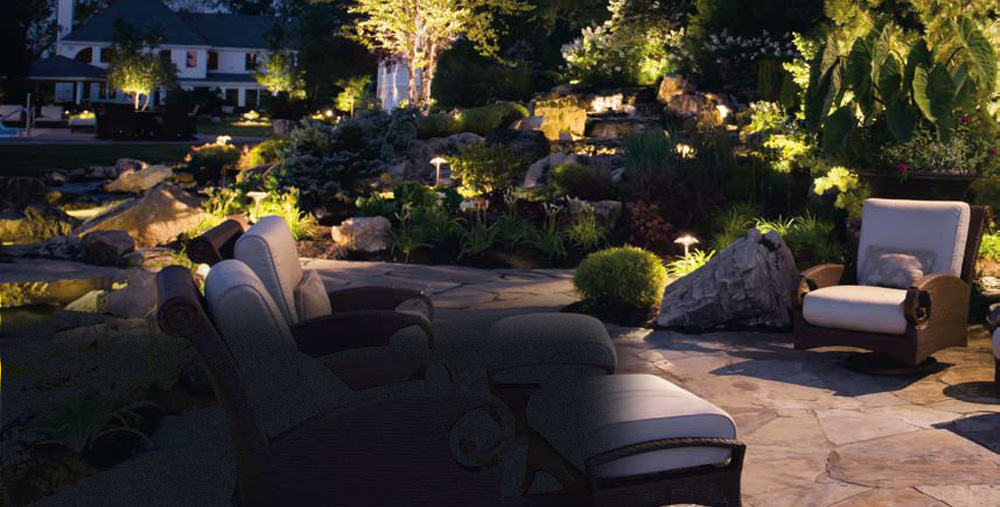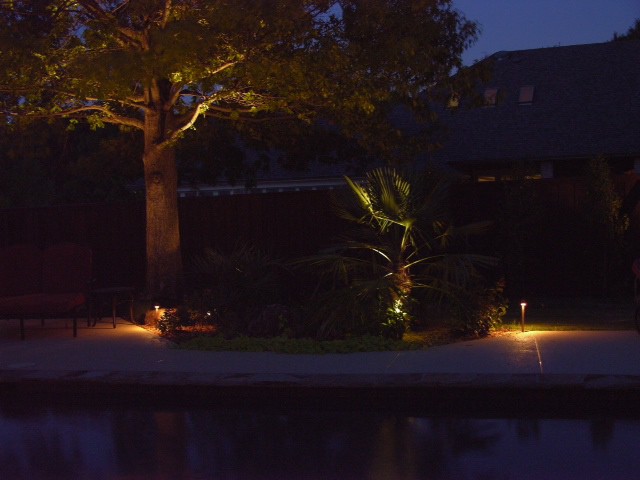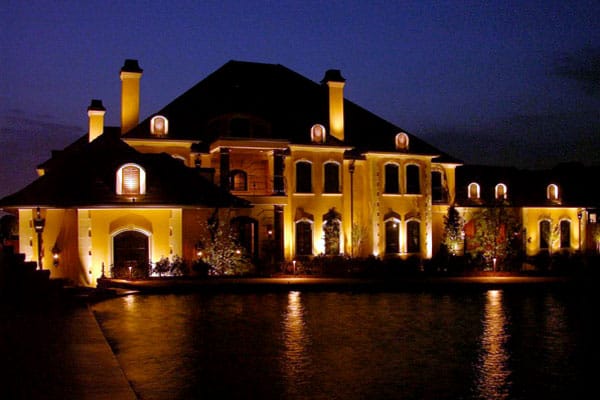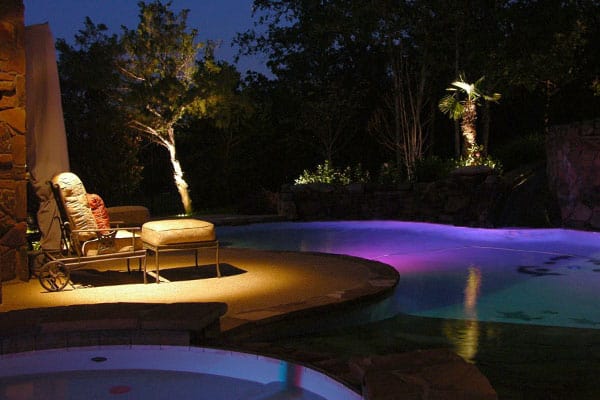
Outdoor lighting is perfect for helping boost the aesthetics, safety, and overall feel of your North Texas home and outdoor living space. Whether you are looking to light up an outdoor entertainment center, a pool, or just the walkways of your garden or driveway, you will need to know what color temperature you are looking for.
What is color temperature and how do you know which one to use for your home?
Here is a simple outdoor lighting color temperature guide, courtesy of the design team at Creative Nightscapes, to help you find your perfect outdoor light color:
What Color Temperature is Used For Landscape Lighting?
Color temperature is a term that helps individuals looking for outdoor lighting know what kind of shade/color the bulb is going to give off when it is on. These colors are measured in degrees Kelvin (K). The lower the Kelvin number, the warmer the light is.
Here is a more detailed look at the color ranging scale for Outdoor LED lights:
2000K-3000K: This temperature range produces a nice and cozy warm white light. It helps create a calming and intimate atmosphere, perfect for outdoor living rooms, outdoor kitchens, and decorative outdoor lighting.
3100K-4500K: This temperature range creates a gorgeous cool white light. This temperature range is bright and vibrant, helping to chase away shadows and give individuals a clear view of their surroundings. This is perfect lighting for areas surrounding stairs, sheds, or outdoor workshops because this color keeps the light focused and encourages individuals to stay alert and attentive.
4600-6500K: This temperature range imitates natural daylight/moonlight. It is crisp and clear, helping to bring attention to detail and drawing one’s eye to a central focus point. This is why this temperature range is used for security lighting, to light areas around a garage, or to help show off gorgeous water features such as a fountain or a pond.
What Color Temperatures Should I Use to Display Outdoor Features?
It can be hard to envision what a certain temperature range is going to look like, especially for those who were not aware that landscape lighting can come in different shades and temperatures.
To highlight a flower garden, statues, stonework, fountains, or other outdoor features, we recommend sticking within the 2000K-3000K range. While most warm light temperatures tend to work best in entertainment areas, there is a feeling of calmness when combined with the cooler look of stone.
We strongly advise against using colder light temperatures, such as 4600K-6500K, because this creates a spooky and unsettling look to your stone.
Outdoor Living and Entertainment Areas

You want your entertainment area to bring out a sense of calming relaxation so that your guests can just enjoy the space. Warm lights, such as 2000K-3000K, tend to work best for these purposes. They are not too harsh on the eyes but still give enough light for everyone to be able to move around safely and see what is around them. If you are wondering what this would look like, just imagine sitting next to the glow of a firepit. That warm glow is exactly what you are going to get from a warm temperature light.
Garden Lighting
If you are looking to show off any beautiful plants you have spent countless hours taking care of, you will want white LED garden lighting inside the range of 3000K-4000K. This neutral white gives a more natural garden light, highlighting the gorgeous natural vibrant colors of your garden.
North Texas Outdoor Lighting Design Specialists
The world of color temperature is exciting, beautiful, and perfect for helping you create your dreams’ outdoor living environment. If you are looking for a design team that can help take your outdoor lighting to the next level, the experts at Creative Nightscapes are your solution. From garden lighting to security lighting, we can do it all and leave you and your neighbors saying, “wow!” Contact us today for more information.
More Resources:

